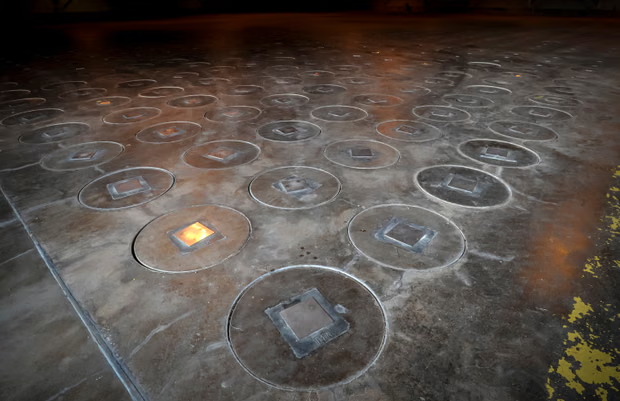Radioactive wasp discovered at ex-US nuclear weapons facility in South Carolina

A wasp nest with dangerously high radiation levels was found at a former nuclear weapons site in South Carolina, raising concerns about legacy contamination.
A highly radioactive wasp nest—measuring radiation levels ten times higher than the permissible safety limit—was recently discovered at the Savannah River Site (SRS) near Aiken, South Carolina. The site, a former hub for manufacturing components of US nuclear weapons, is now primarily used for processing nuclear material for energy purposes.
The discovery was made on July 3 by radiation safety personnel during routine inspections. The nest was attached to a post not far from massive underground tanks that house millions of gallons of liquid nuclear waste. However, federal officials were quick to clarify that the contamination did not result from any current leaks in the tanks.
According to a newly released report from the US Department of Energy, the nest was immediately treated with insecticide to kill any remaining wasps and then safely removed as radioactive waste. No live wasps were found inside at the time of removal.
Investigators believe the contamination came from what is known as “onsite legacy radioactive contamination”—a term used to describe leftover radiation from the site’s operations during the Cold War era when it was used to produce plutonium for nuclear weapons. The facility, which dates back to the 1950s, has since shifted its focus to supporting the civilian nuclear energy sector.
The Department of Energy also noted that while the nest itself showed dangerously high levels of radiation, the wasps that inhabited it would have absorbed significantly lower doses. In addition, the limited flying range of wasps—typically just a few hundred feet from their nest—suggests that any potential contamination was contained within the site’s vast 310-square-mile area.
“There were no impacts to workers, the environment, or the public,” the report stated, emphasizing that no radioactive material had been detected in the surrounding area.
Despite these reassurances, environmental advocates are not convinced. Savannah River Site Watch, a local watchdog organization, raised concerns about transparency and the possibility of undisclosed contamination.
“I’m as mad as a hornet that SRS didn’t explain where the radioactive waste came from or whether there’s a leak the public should know about,” said Tom Clements, the group’s director, in a statement to the Associated Press.
The Savannah River Site remains home to 43 active underground nuclear waste tanks, with eight having already been closed. In total, the facility has produced over 165 million gallons (625 million litres) of liquid nuclear waste since its inception, making it one of the largest such sites in the United States.
While officials maintain that this was an isolated incident with no health or environmental risk, the discovery of a radioactive wasp nest has reignited concerns over how legacy nuclear contamination is monitored and managed at aging facilities across the country.

